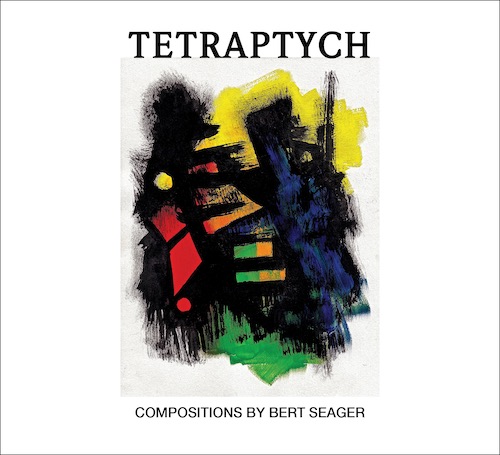
Tetraptych
Say: “TET-trup-tick”
Grounded in the lineage of the modern jazz saxophone quartet, Tetraptych brings a breathing conversant quality to the music, where movement, playfulness, sensitivity, and deep groove are ever-present in an openhearted chemistry. These core musical values come to life as the musicians relate and venture into uncharted territory.
The word tetraptych refers to a four-paneled painting where each panel can stand on its own. Seen together, the panorama of panels gives greater meaning to the interaction of the parts. The music is democratic. Ones attention moves from instrument to instrument, panel to panel, as the collective improvisation unfolds.
The band plays the music of pianist, composer and band leader Bert Seager, who has written tunes specifically to fit these musicians, their strengths and collaborative chemistry. The music prominently features New York City-based Hery Paz on tenor saxophone. Each one of his solos is imbued with a depth of purpose, a sense of patience and a willingness to venture into the unknown. This commitment reflects the essential inner resources that were required of him during his family’s harrowing emigration from Cuba and subsequent struggle here in the United States. Max Ridley, their upright bassist, makes the music dance while playfully breaking open the grid of time to liberate the proceedings. Dor Herskovits, the Israeli-born drummer whose deep feel and intelligent phrasing drive and shape the music, holds the key to its ebullience.
“Tetraptych is the work of a true working band. The superb strengths of the individual players – Hery Paz is a revelation and the rhythm section is marvelous – are always in service of the music. I have followed Bert Seager for 30 years, and I feel that this the strongest project yet from an artist who is always searching for a more personal expression. A wonderful album in every way.” – Fred Hersch
Bert Seager writes, “The evolution of this music, our sound, and approach to the repertoire is nurtured by our collaboration. We deconstruct our tunes, paring down the elements, inventing new structures, making new combinations, leaving some parts aside to work more deeply with others. The resulting music has a feeling and movement that goes far beyond the musical scores that I write for the band. Our performances reflect an even greater willingness to open – and even surrender – to the higher intentions of our musical purpose, often leaving the planned behind.”


